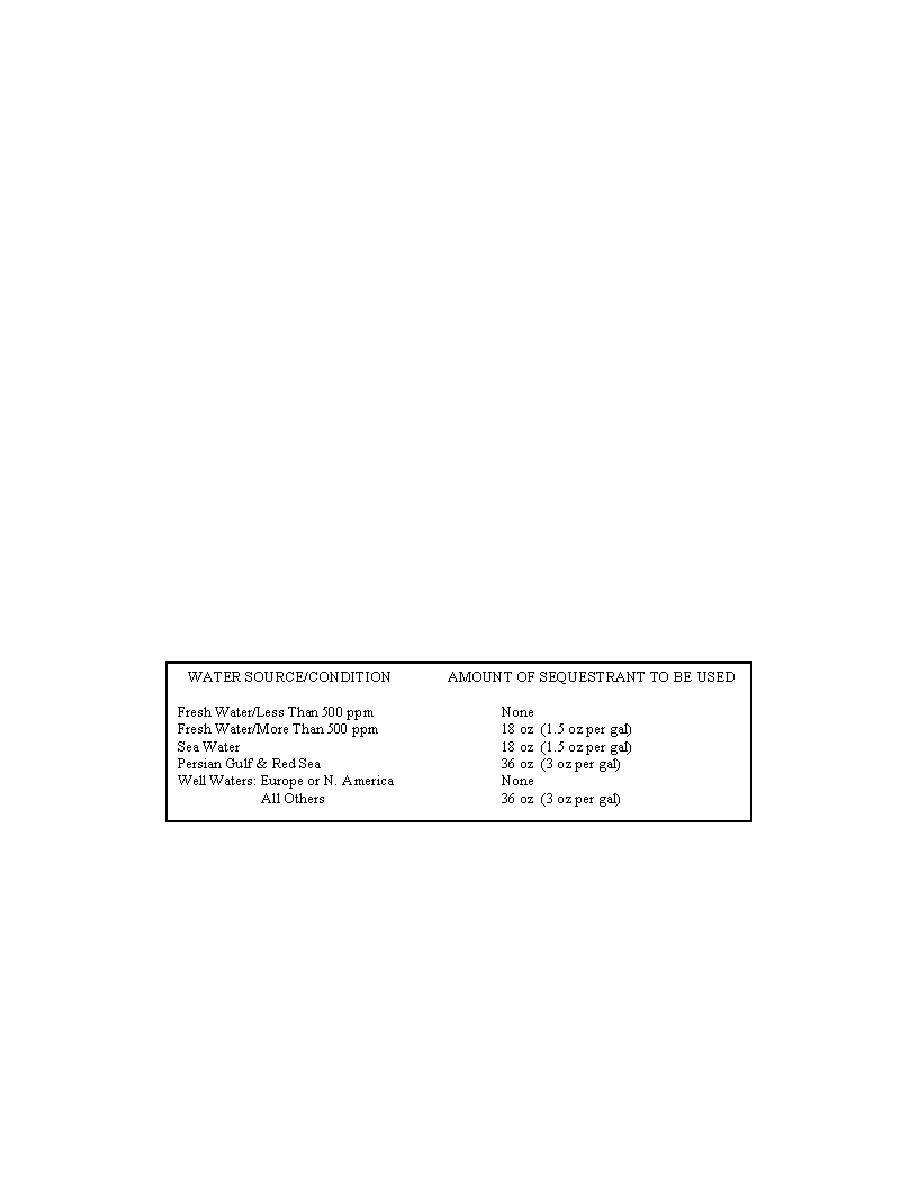
15. The next step is to have the crew proceed with the final chemical
system setup. Make sure that the crewmembers wear a protective shield and
gloves when handling chemicals.
Ensure that the correct procedures are
followed.
a. Have the operator start with the final polyelectrolyte setup.
If
polyelectrolyte is not being used, fill the polyelectrolyte tank half full
with product water and proceed to "Sequestrant Setup". The operator should
perform the following:
(1) Add an additional 28 oz of polyelectrolyte to the polyelectrolyte
tank. Partially close the product shut-off valve to provide back pressure
no greater than 20 psig. Open fully when the chemical tanks are filled.
(2) Use the product utility hose to fill the tank with product water.
Vigorously mix with mixing paddle for two minutes. Visually make sure all
polyelectrolyte is in solution.
(3) The normal fill is 48 oz of polyelectrolyte in a full tank (12
gallons) of water which equals to 4 oz per gallon of water.
b. Have the operator move to the sequestrant setup.
Sequestrant
containers and chemical bottles are identified by a square symbol.
The
operator should perform the following:
(1) Fill sequestrant tank half full with product water, using product
utility hose. The operator determines how much sequestrant should be used
based on the TDS, type of source, and adds it to the tank (see Table 1-4).
Table 1-4.
Sequestrant Concentration
(2) If sequestrant is added, also add one large 2 lb bag of
bisulfite. Fill tank to full level (number 12 on scale) with product water
and vigorously mix with mixing paddle for two minutes.
By visual
observation, make sure all sequestrant is in solution. The operator should
use caution when mixing to avoid hitting fittings and switches in tank.
1-11
QM4911



 Previous Page
Previous Page
